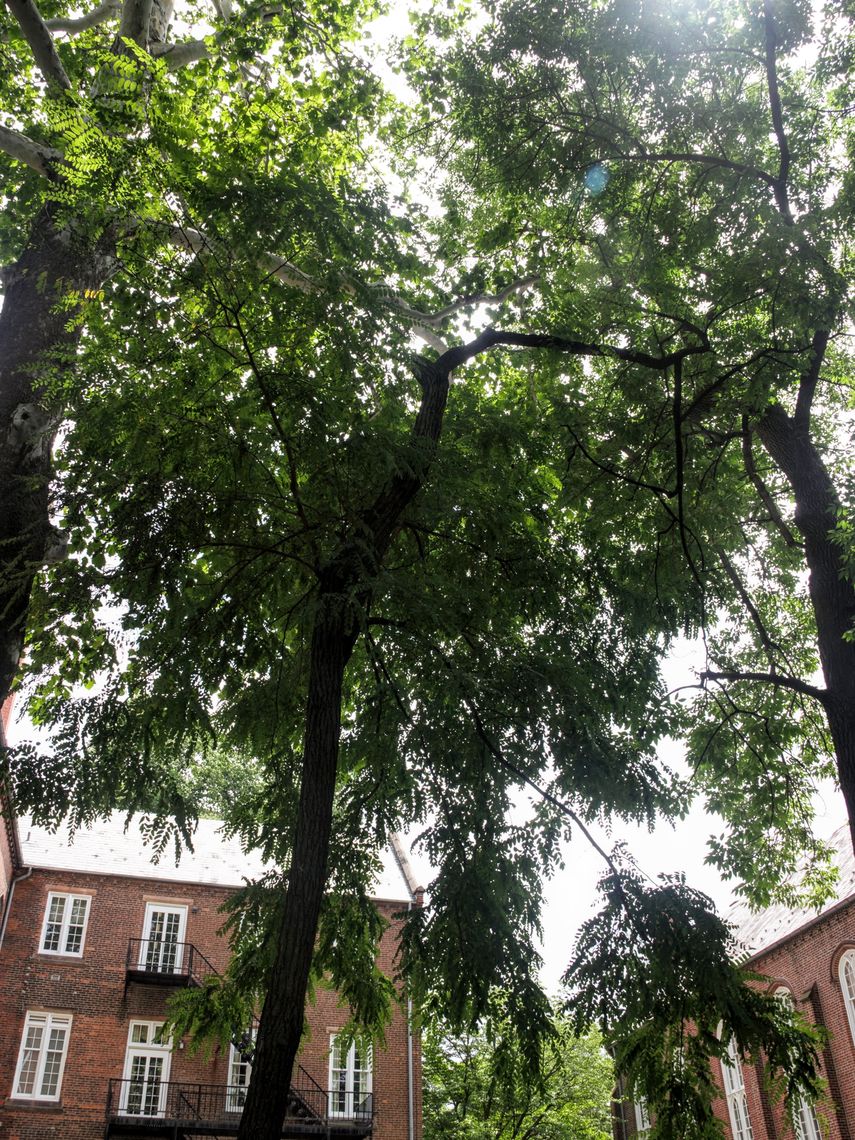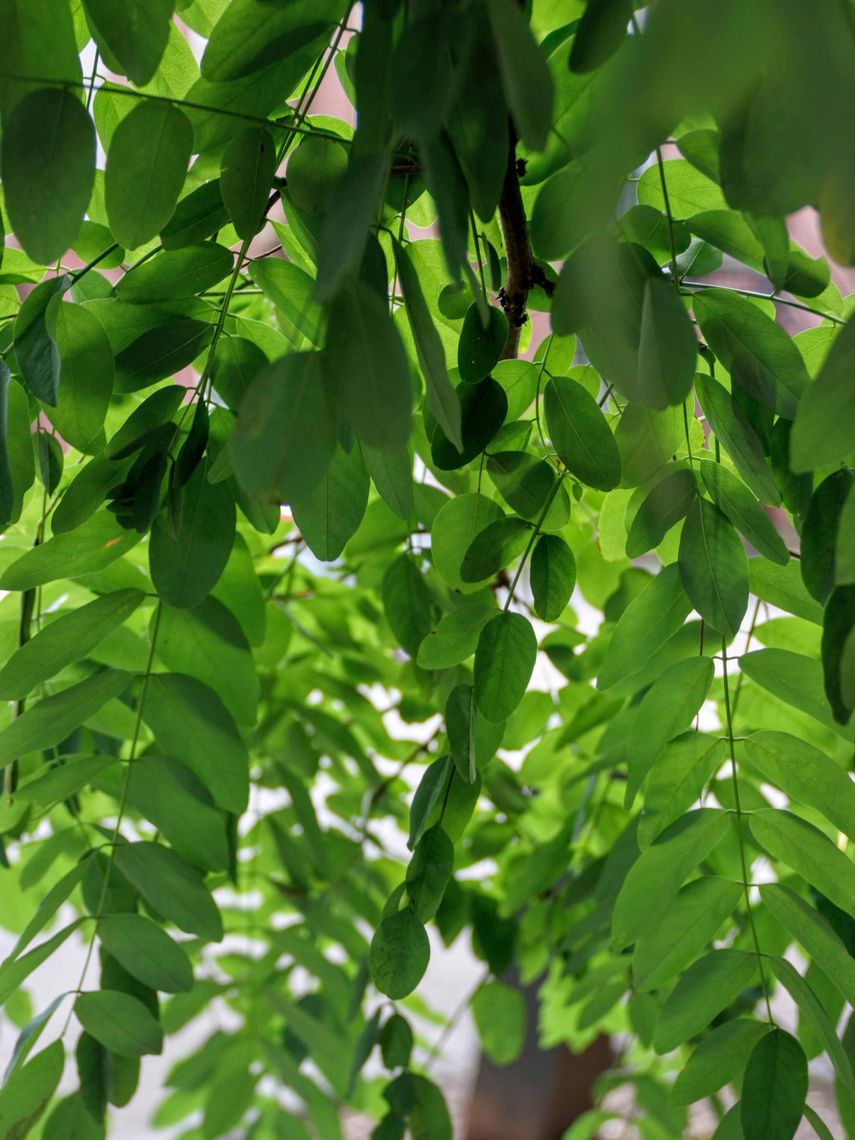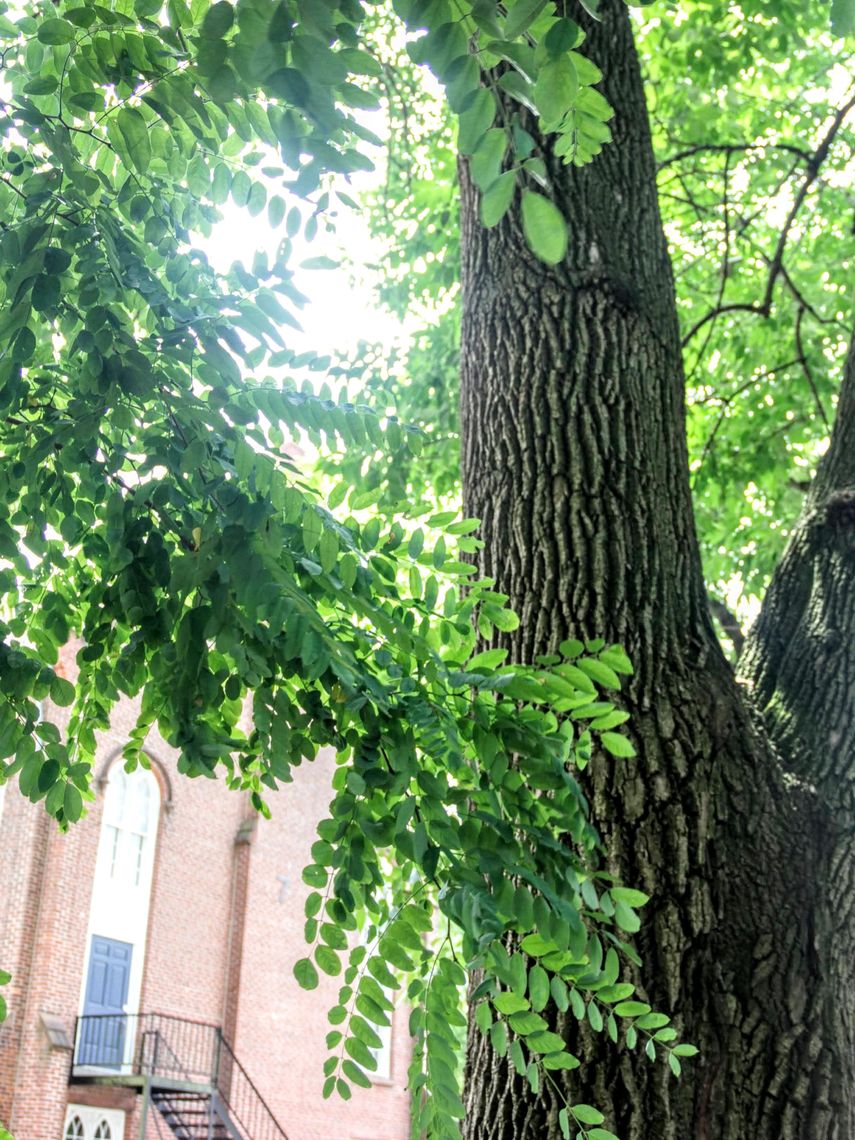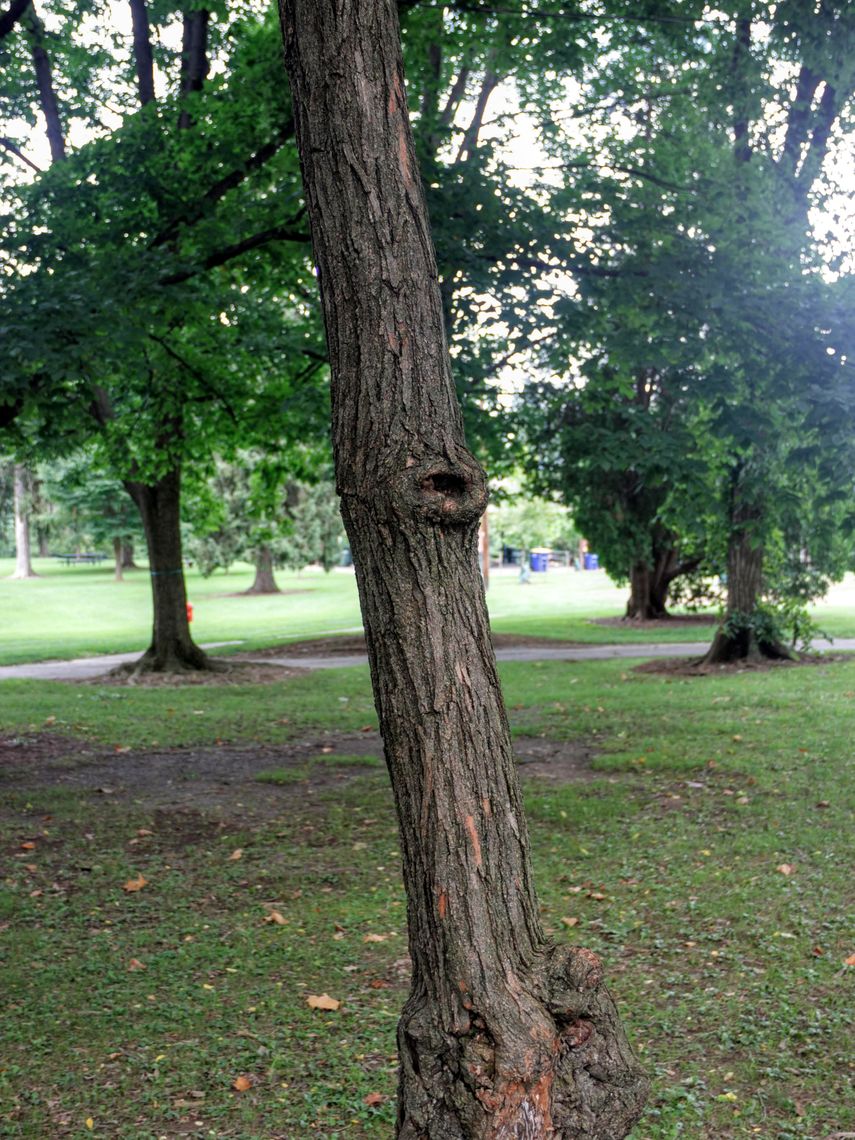Black Locust (Robinia pseudoacacia)
The black locust is most notable for its large, hanging clusters of very fragrant, white flowers that bloom in the spring and attract insect pollinators. The tree has large leaves that are made up of numerous, smaller, oval shaped, blue-green leaflets. This tree is also commonly called the common locust, yellow locust, white locust, green locust, pea flower locust, or false acacia.
Family: Fabaceae (Pea)
Characteristics: The 12-inch-long leaves are made up of 23 smaller, oval shaped, blue-green leaflets. In the fall, leaves may turn a dull yellow. In May-June, creamy white, fragrant flowers begin to bloom in 4-8 inch long hanging racemes (clusters of flowers where each flower is attached to its own stalk). These flowers give way to 4-inch-long, flat, brown, seed bearing pods. Branches have 1 inch long paired spines. Bark is dark gray-brown and becomes deeply ridged with age. This tree takes the form of a suckering shrub or an oval-shaped upright tree. It grows 30-50 feet high and 20-35 feet wide.
Foliage: Deciduous (leaves lost seasonally)
Geographic Origin: Eastern and central United States (native)
Cultivation Notes: Requires medium maintenance. Does best in full sun, though can tolerate light shade. Prefers dry to medium moist, and well-drained soils, though is tolerant of almost any soil type. This tree has invasive traits.
Number on Campus: 1
Sources: Dirr, Morton Arboretum, Missouri Botanical Garden




